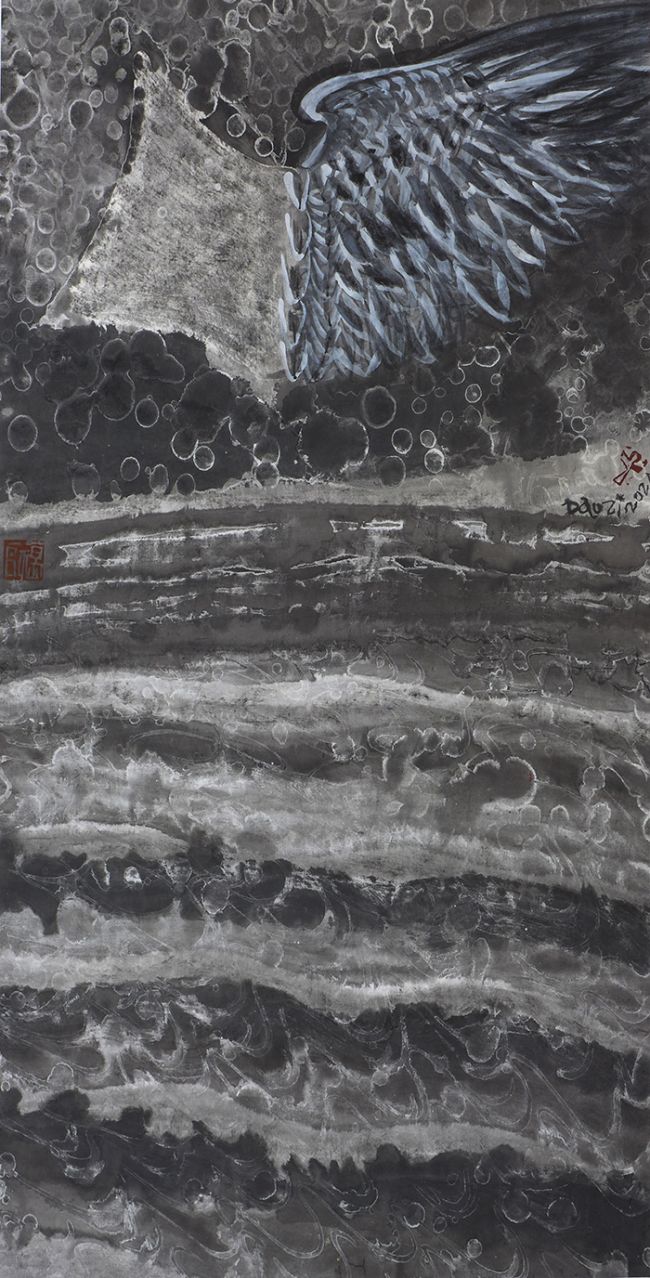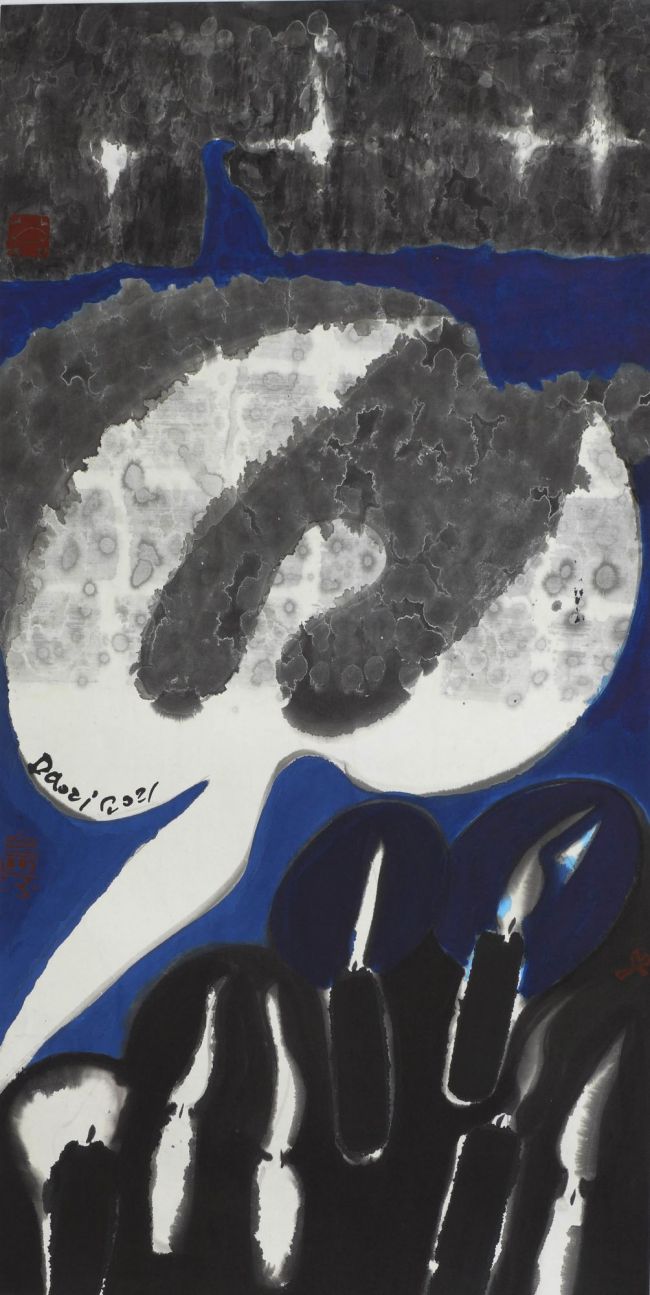Duke Initiatives in Theology and the Arts (DITA) and Duke Chapel hosted prominent contemporary Chinese artist DaoZi Oct. 23–26 for a series of events to mark the U.S. premiere of his exhibition Transcendence + Immanence: The Sacred Ink Wash Art of DaoZi. As an expression of his gratitude, DaoZi presented two original paintings to Duke Divinity as gifts: The Melancholic Christ and Blessed and Humble.
A professor at the Academy of Art & Design at Tsinghua University, DaoZi (whose given name is Wang Min) is an accomplished painter with an extensive knowledge of art history and sacred art. The two paintings given to Duke Divinity exemplify his engagement with sacred iconography and his understanding of diverse forms of traditional Chinese art.
Blessed and Humble is an ink and watercolor scroll that sets the Beatitude “Blessed are the pure in heart” in cascading lines of Chinese calligraphy. DaoZi uses one of the most complex forms of Chinese calligraphy, which joins multiple characters in a single stroke. He chose this calligraphy method to represent the continuous ministry of the Spirit to the body of Christ and the immanent nature of God’s Spirit. Each character is artfully placed so that the full stanza appears to be floating against the scroll’s white ground—a composition intended to capture the Spirit’s activity in Genesis: “And the spirit of God was hovering over the waters” (1:2) The medium of the scroll itself also alludes to Scripture, especially Revelation and the Prophets.
The Melancholic Christ is an iconographic illustration of God’s presence to the suffering world and a direct reference to the “Man of Sorrows” in Isaiah 53. Created during the Covid pandemic, the painting’s composition emphasizes the sorrowful face of Christ, and the colors—the artist’s own visual trinity of red, gold, and blue—inform the work’s theological aesthetic. The color red, used to represent the blood of Christ, is the foundation of the work; the face of Christ is surrounded in gold and azure stripes to symbolize Christ’s holiness. The paints are each mixed against a base of charred Chinese ink, a form of ancient ink wash painting that DaoZi transforms into a theological representation of the pain and sorrow of Christ’s death on the cross. The eyes and the nose decline at an angle that draws the eye downward so that viewers can contemplate the suffering vision and work of Christ. As DaoZi describes it, the painting is crafted to capture how “God shoulders the burden of global suffering, hunger, and persecution.”
DaoZi’s work is informed by his faith, and these pieces were each crafted specifically for a sacred audience. In response to the invitation to be a visiting artist at Duke Divinity School, he chose these two works to present as gifts because they represent the work and life of Christ to the people of God and to all of humanity—a work that mirrors the ministry of Duke Divinity to its students, to the body of Christ, and to the world.
“The Divinity School,” he said, is “an ideal place to display these works.” Through his translator, he expressed his hope that these two works prove a meaningful addition to the Divinity School’s permanent collection, saying that his visit to Duke and the exhibition of his works here was one of the greatest privileges of his career.
DaoZi (whose given name is Wang Min) works in a style called Sacred Ink Wash Painting through which he combines traditional Chinese ink painting techniques and materials with themes infused with his Christian faith. You can watch DaoZi's lecture "The Spirit of Christ and Sacred Ink Painting and learn more here. The exhibition is presented in two adjacent galleries in Duke Chapel and Duke Divinity School’s 00 Westbrook hallway. Both galleries are on display until Nov. 26, 2023.





